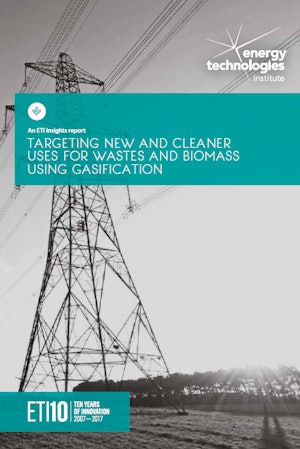Targeting new and cleaner uses for wastes and biomass using gasification

Geraint Evans
Programme Manager

Gasification with integrated syngas clean-up to remove undesirable components can be used to produce an “ultra-clean” syngas suitable for use in demanding and efficient applications including reciprocating engines, gas turbines, chemical synthesis processes (for example, to produce hydrogen, fuels or chemicals) and/or biological synthesis processes. It offers a number of benefits including:
- flexible in feedstock and outputs (heat, power, liquid and gaseous fuels, and chemicals)
- high efficiencies
- scalable to suit applications in typical UK towns and small cities, in particular at the sub 10 MWe scale
- ability to be combined with CCS to create “negative emissions” which ETI anticipates will be needed to deliver a cost-effective 2050 low carbon energy system
Currently, however, the technology and commercial risks are too high for typical investors and developers. To accelerate the technology to the point where these risks are more acceptable, the ETI has recently announced that it is investing in the construction of a 1.5 MWe waste gasification demonstration project incorporating an engine fuelled by “ultra-clean”, tar-free syngas. This paper seeks to present why the ETI thinks this technology is important and how its research has mitigated many of the risks associated in driving this sector forward.

Geraint Evans
Programme Manager